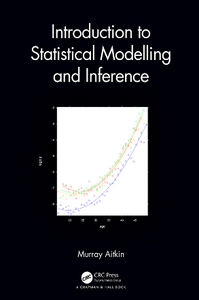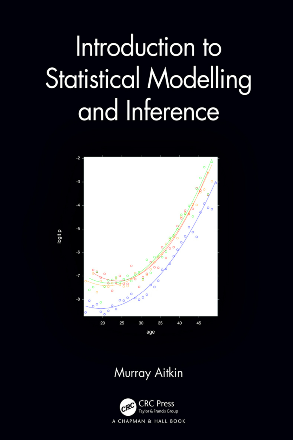Introduction to Statistical Modelling and Inference
by Murray Aitkin
English | 2023 | ISBN: 1032105712 | 374 Pages | True ePUB | 11.8 MB
by Murray Aitkin
English | 2023 | ISBN: 1032105712 | 374 Pages | True ePUB | 11.8 MB
The complexity of large-scale data sets (“Big Data”) has stimulated the development of advanced
computational methods for analysing them. There are two different kinds of methods to aid this. The
model-based method uses probability models and likelihood and Bayesian theory, while the model-free
method does not require a probability model, likelihood or Bayesian theory. These two approaches
are based on different philosophical principles of probability theory, espoused by the famous
statisticians Ronald Fisher and Jerzy Neyman.
Introduction to Statistical Modelling and Inference covers simple experimental and survey designs,
and probability models up to and including generalised linear (regression) models and some
extensions of these, including finite mixtures. A wide range of examples from different application
fields are also discussed and analysed. No special software is used, beyond that needed for maximum
likelihood analysis of generalised linear models. Students are expected to have a basic
mathematical background in algebra, coordinate geometry and calculus.
Features
• Probability models are developed from the shape of the sample empirical cumulative distribution
function (cdf) or a transformation of it.
• Bounds for the value of the population cumulative distribution function are obtained from the
Beta distribution at each point of the empirical cdf.
• Bayes’s theorem is developed from the properties of the screening test for a rare condition.
• The multinomial distribution provides an always-true model for any randomly sampled data.
• The model-free bootstrap method for finding the precision of a sample estimate has a model-based
parallel – the Bayesian bootstrap – based on the always-true multinomial distribution.
• The Bayesian posterior distributions of model parameters can be obtained from the maximum
likelihood analysis of the model.
This book is aimed at students in a wide range of disciplines including Data Science. The book is
based on the model-based theory, used widely by scientists in many fields, and compares it, in less
detail, with the model-free theory, popular in computer science, machine learning and official
survey analysis. The development of the model-based theory is accelerated by recent developments
in Bayesian analysis.



